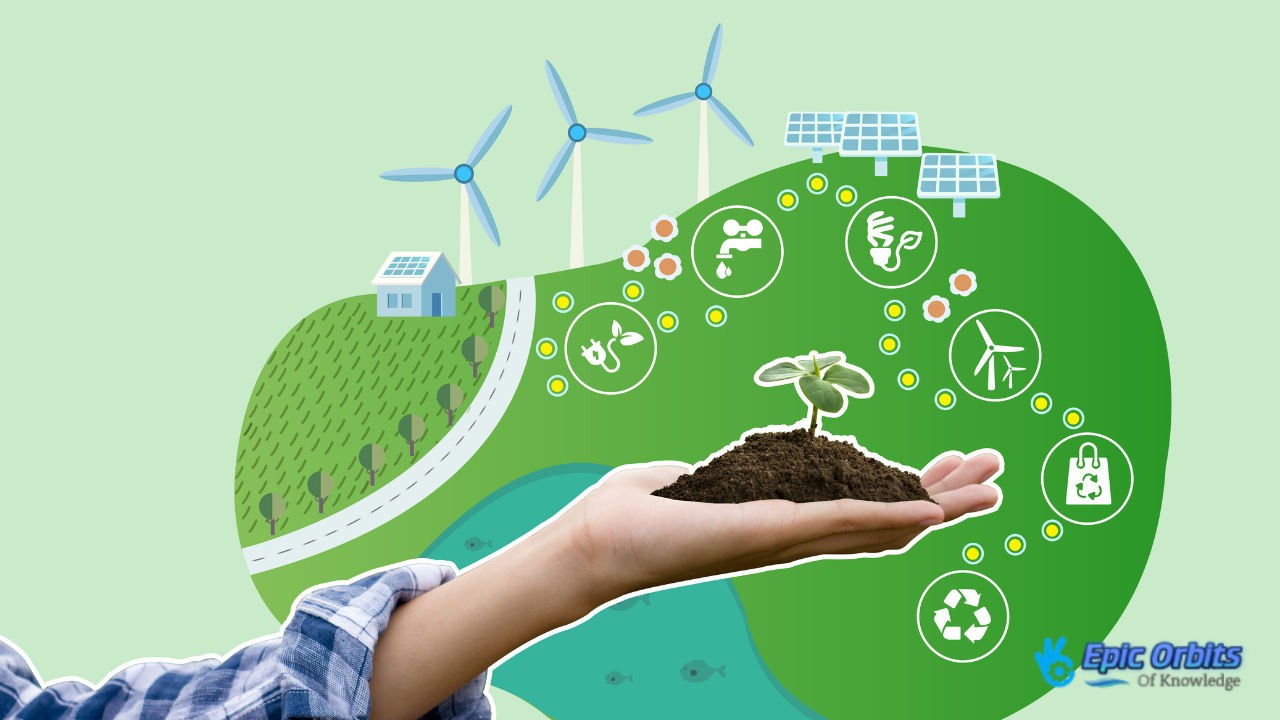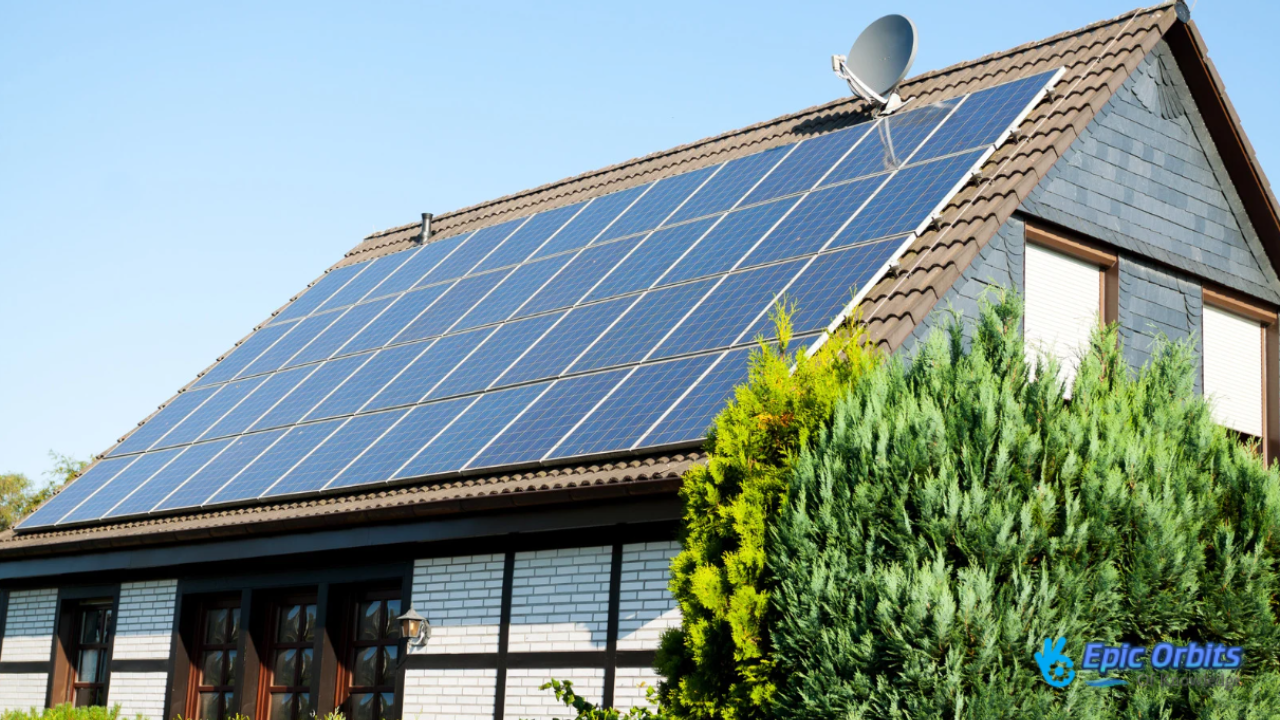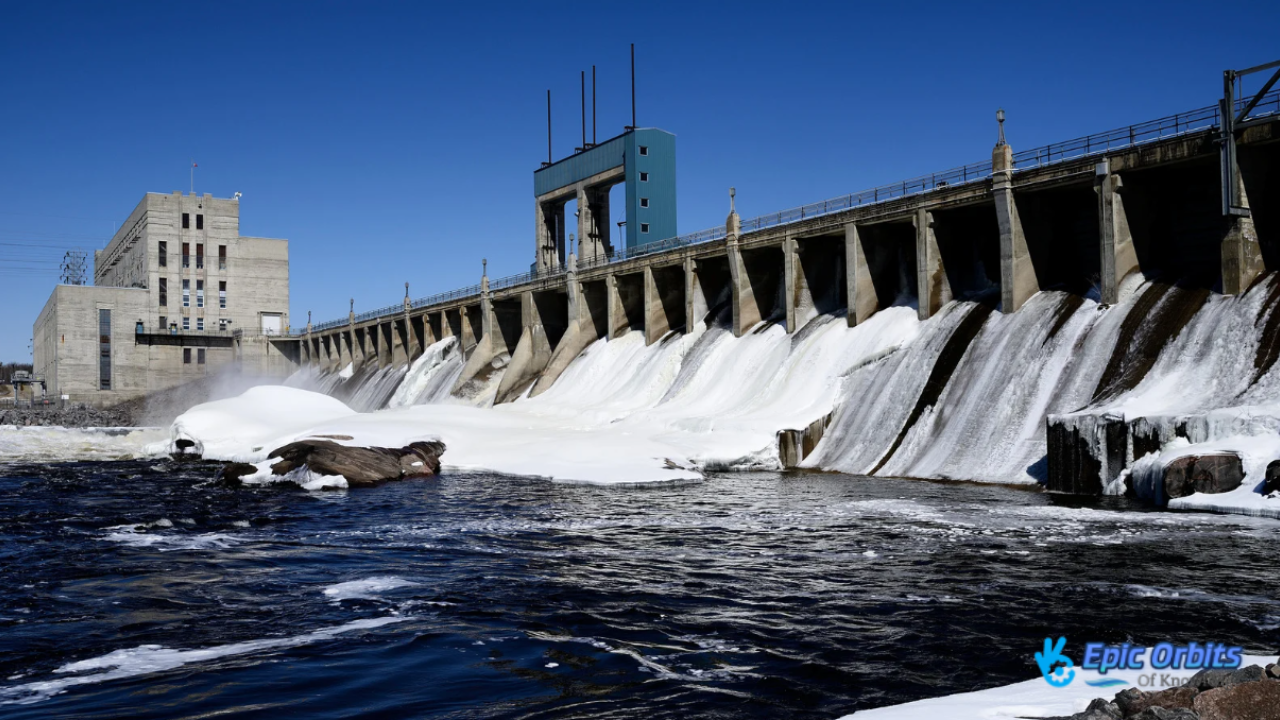How Renewable Energy Sources Are Shaping the Future
Discover the best renewable energy sources for our future. Learn how these sustainable options are transforming today's energy landscape.

With the rapid adoption of renewable energy, the world's energy landscape is undergoing a radical transformation. Countries and companies are increasingly turning to sustainable renewable energy sources to meet their energy needs, with global demand for environmentally friendly power generation technologies on the rise.
Renewable energy is a more ecologically friendly alternative than fossil fuels, which take millions of years to develop and emit hazardous pollutants, as it emits few greenhouse gases. Furthermore, much enhanced is the cost-effectiveness of renewable energy technologies, which now rival conventional energy sources.
Renewable Energy Sources: The Changing Terrestrial Energy Scene
The globe is looking more and more toward renewable energy to satisfy its demands as worries about energy security and climate change develop. This shift, driven by the urgent need for an energy transition and the movement away from fossil fuels towards greener energy sources, is transforming global energy consumption.
The limited character of fossil fuels and the mounting danger of climate change make an energy transition more urgently necessary. Countries like Britain had achieved notable progress by 2020; with renewables accounting for 43.1% of the electrical mix, they exceeded natural gas and coal. Rising climate concerns and lowering renewable technology prices are among the elements driving this shift.
Nations around the world are rapidly increasing their renewable capacity and aiming to reduce their reliance significantly on coal, oil, and natural gas. The speed of this change varies; some nations approach 75% renewable power while others remain mostly dependent on fossil fuels.
The change from fossil fuels to renewable energy marks a fundamental reorganizing of world energy networks and economic paradigms. Energy experts underline that this transformation calls not just for technical change but also for legislative assistance, infrastructural development, and changes in consumer behavior.
Historical records show wonderful advancement in many areas. Britain's attainment of 43.1% renewable power output by 2020, for example, shows the possibility for quick transformation. The shift toward renewable energy offers chances for economic growth and innovation, as well as challenges to current businesses.
Principal Renewable Energy Sources Changing Our World
Major renewable energy sources are helping to define the direction of energy production going forward. These sources are increasingly crucial for producing energy and power as the globe moves away from fossil fuels.
1. Renewable Energy Sources: Wind Power
Thanks in great part to modern wind energy technologies, wind power can be effectively harnessed. Clean and green, wind turbines transform kinetic energy from wind into electricity.

✅ Prospect and application of wind power worldwide
Wind resources are calculated based on the average wind speed and the distribution of wind speed data within a given region. Group areas range from 1 to 7 for wind power classifications.
Though some suitable sites may also be found in areas of classes 1 and 2, a wind power class of 3 or above (equivalent to a wind power density of 150–200 watts per square meter, or a mean wind of 5.1–5.6 meters per second [11.4–12.5 miles per hour]) is suitable for generating wind power on a utility scale.
Along with some offshore sites, the Great Plains area of the United States has significant wind resources.
By 2022, wind accounted for over 10% of the entire U.S. utility-scale energy output and was generating more than 7% of the world's total electricity. Concerns about the expense of petroleum and the consequences of burning fossil fuels on the climate and environment have been driving a remarkable rise in the production of electricity by wind (see also global warming).
From 95 gigawatts to 487 gigawatts globally, for instance, total installed wind power capacity quintupled between 2007 and 2016. With over 329 gigabytes and almost 133 gigabytes, respectively, China and the United States had the most installed wind capacity in 2021; Denmark produced the highest proportion of its power from wind the same year (more than 43%).
Depending on the site, many estimates place the cost of wind energy as low as 2–6 cents per kilowatt-hour. This rate is on par with the cost of coal, natural gas, and other fossil fuels—which run between 5 and 17 cents per kilowatt-hour.
Areas where many wind turbines are arranged together to provide a greater overall energy supply are called wind farms.
Comprising more than 7,000 wind turbines in China's Gansu province producing more than 6,000 megawatts of electricity, the Jiuquan Wind Electricity Base was the biggest wind farm in the world as of 2018. When it was opened in 2013, one of the biggest offshore active wind farms in the world, the London Array, generated up to 630 megawatts of electricity from an area of 122 square kilometers (approximately 47 square miles) on the Thames estuary's outer approaches.
Since then, several additional wind farms along Great Britain's coast—Triton Knoll (857 megawatts capacity), Moray East (950 megawatts capacity), and Seagreen (1,075 megawatts capacity)—have exceeded it. Up to 6,000 megawatts of capacity are planned for the Hornsea Wind Farm project close to the Yorkshire coast of England.
Comprising an area of 407 square kilometers (approximately 157 square miles), Hornsea One, the first arm of the project, went online in 2019 and generates around 1,200 megawatts of electricity. A typical new coal-fired generating facility averages around 550 megawatts by contrast.
✅ Turbines for wind energy
Modern commercial wind turbines operate an electrical generator from rotational energy to generate electricity. One or more blades fastened to a rotor and a cage known as a nacelle with a drivetrain perched atop a tall tower make them up. The two main forms of wind turbines are the more experimental vertical-axis wind turbines (VAWTs) and conventional horizontal-axis wind turbines (HAWTs).
Each HAWT turbine, similar to an aircraft propeller or a multiblade disk, has two or three blades. Attached to towers heightening 240 meters (787 feet), the biggest of these turbines can generate 4.8–9.5 megawatts of electricity and have a rotor diameter spanning more than 162 meters (approximately 531 feet).
Much smaller designs—which generate up to 1.8 megawatts—have a blade length of around 40 meters (about 130 feet) and are linked to towers roughly 80 meters (about 260 feet). Individual residences may be powered by smaller HAWT units.
Shape and technique of harvesting wind energy define VAWT designs. Most VAWTs are usually built with blades that revolve around a vertical pole, allowing them to capture wind flowing from any direction. Early twenty-first-century VAWTs most often used curved blades in a curved arch shape, including the Darrieus VAWT.
Although most VAWTs are not economically competitive with HAWTs, their research and development are still of great interest, especially for the creation of integrated wind energy systems.
✅ Difficulties and shortcomings
Siting criteria, including wind availability, aesthetic and environmental issues, and land availability, challenge the broad use of wind energy. Although these sites are not often near major population centers, wind farms are most economical in places with regular high winds. Power lines and other parts of electrical distribution networks also have to be able to send this energy to users. Furthermore, since wind is an intermittent and erratic energy source, storing electricity might be required.
Negative environmental effects related to noise, visual disturbance, and effects on animals define a main issue of wind farms. Two types of noise connected with turbines are mechanical noise, generated by their equipment, including their gearbox, and aerodynamic noise, generated by the passage of air over the blades. Changing the turbine's mechanical parts could help reduce mechanical noise. Often referred to as a “swishing” sound, aerodynamic noise affects both kinds of blades and rotation speed.
Though typically equivalent to nocturnal rural background noise, wind turbine noise in decibels has been shown to be no louder than that felt in a moving automobile. Other issues include flicker zones, wherein light could be bounced off the rotating blades, and pockets of electromagnetic interference influencing radio and television transmissions next to turbines.
Public advocacy organizations have expressed worries about the possible disturbances wind farms can cause to general aesthetics and wildlife. Although wind generators have been criticized for hurting and killing birds, researchers have proved that contemporary turbines have little impact on bird numbers. The National Audubon Society, a large environmental organization based in the United States that focuses on preserving birds and other wildlife, supports wind power because wind farms are strategically located to reduce their impact on migrating bird populations and important habitats.
Especially, reports of dead bats from wind turbines are somewhat greater than those of birds. Although the precise reason of their deaths is unclear, scientists are now studying the movement and mating habits of migrating tree bats extensively.
2. Renewable Energy Sources: Solar Energy
Solar panel systems are meant to gather sunlight and convert it into power. Because of its sustainability and declining cost, this renewable energy source is gaining favor.

✅ Why should we use solar energy, and how does it work?
Solar modules absorb sunlight and convert it into a usable form of electricity. The sun shines everywhere, so solar energy is available everywhere. Solar electric power systems are affordable for remote locations because they can be connected to batteries for energy storage, isolating them from the public electricity grid.
With a long service life of over 25 years of guaranteed power and no moving components, solar modules are highly reliable and require minimal maintenance. Because solar energy relies on the sun as a fuel source, there's no need to search for, refine, or transport petroleum fuels. Solar energy has many benefits, as you can clearly see.
✅ The solar energy sector is expanding significantly.
Designing and installing large-scale solar energy systems helps us replace unsustainable and harmful energy sources. As the solar energy sector expands, the need for qualified personnel increases!
Companies train women and men around the world to harness the power of the sun and build the technical skills needed to design and install photovoltaic systems to provide clean electricity and create positive change in their communities.
3. Hydroelectric power is that derived from water
One of the earliest and most plentiful types of renewable energy, hydropower—also known as hydroelectric power—generates electricity by using the natural flow of flowing water. Hydropower currently accounts for 5.86% of total U.S. utility-scale electricity output and 27% of overall U.S. renewable energy generating capacity.

Although most people would link the energy source to the Hoover Dam, a massive construction using the power of a whole river behind its wall, hydropower plants range in scale. Some hydropower plants can be huge, while others can be small, depending on the water flow in irrigation ditches or municipal water supplies. With run-of-river systems or diversions that route part of a stream through a powerhouse before the water rejoins the main river, they may even be “damless.”
Regardless of the method, most people are unaware of how widely used and easily accessible hydropower is. In fact, while some states use hydropower more than others, all but two states—Delaware and Mississippi—utilize it for energy. For instance, hydropower accounted for over 60% of the energy used in Washington State in 2023.
Under hydropower flexibility research headed by the National Renewable Energy Laboratory, early results indicate that the firm capacity connected with the flexibility of U.S. hydropower is projected to be above 24 GW. Replacing this capacity with storage would need the development of 24 GW of 10-hour capacity—more than all the current storage capacity in the United States.
✅ What is the background of hydropower?
Hydropower has a history of thousands of years. For instance, more than 2,000 years ago the Greeks ground wheat into flour using water wheels. The modern hydropower turbine started its development in the middle of the 1700s when French hydraulic and military engineer Bernard Forest de Bélidor penned Architecture Hydraulique.
Many important advances in hydropower technology happened in the first half of the 19th century and more since. The last century has witnessed many hydroelectric innovations that have helped hydropower become a mainstay of the renewable energy mix in the United States.
Visit the Hydropower STEM Portal to learn about science, technology, engineering, and mathematics (STEM) workforce development possibilities and how to enter the hydropower sector.
✅ In what ways does hydropower work?
Using the elevation difference—created by a dam or diversion structure—created by water flowing in on one side and out, far below, hydropower technologies provide electricity. The “Hydropower 101” video produced by the Department of Energy clarifies some of the Water Power Technologies Office (WPTO) research and development activities in this field as well as how hydropower operates.
For millennia, people have known and used the advantages of hydropower. Apart from being a sustainable and reasonably priced source of energy, hydropower facilities may instantly provide grid power, acting as a flexible and dependable backup source amid significant interruptions or outages of electricity. Outside of generating electricity, hydropower has other advantages, including water supply, agricultural assistance, and flood control.
✅ Hydroelectric power's cost is what?
Among the reasonably priced sources of energy available, hydropower comes out as the least expensive. States like Idaho, Washington, and Oregon derive most of their electricity from hydropower, which depends solely on the energy from flowing water; so, their energy costs are cheaper than those of the rest of the nation.
In terms of maintenance, operations, and fuel, hydropower also offers quite cheap costs over other energy sources for the whole lifespan of a project. Like every major energy source, hydropower has inevitable upfront expenses; yet, its extended lifetime distributes these expenses over time. Long-term cost savings may also result from the equipment used in hydropower plants operating for extended lengths of time without requiring replacements or repairs.
Large hydropower projects usually include civil construction activities (such as dam building, tunnel construction, and other required infrastructure) and electromechanical equipment expenses (electricity-generating gear). Since hydropower is a site-specific technology, appropriate site selection and design help reduce these expenses at the planning stage.
4. Geothermal Energy: Earth's Internal Heat
Geothermal energy, which is a renewable energy source, is harnessed from the thermal energy stored in rocks and fluids far below the surface of the planet.

Drilled wells link the fluid to the ground's surface so that it may be utilized for various uses, including direct heating or district heating, water heating, or industrial operations.
There are many geothermal technologies, varying in degree of development. Compared to other renewable sources like wind and solar power, geothermal energy's participation in the EU's renewable energy mix is therefore minor thus far. However, given the European Green Deal and the EU's aim to reach carbon neutrality by 2050, it has possibilities to expand.
✅ opportunities and benefits
Unlike other renewable energy sources, geothermal energy has the significant advantage of not being dependent on weather conditions. The International Renewable Energy Agency (IRENA) claims that geothermal energy might play a role in stabilizing power grids, as it helps counter the hazards related to an energy system based on the unpredictable supply of other renewable energy sources. Geothermal provides efficiency advantages when utilized for heating, as it supplies heat straight.
Starting geothermal projects would boost local value creation and job possibilities. As a byproduct, geothermal systems also generate lithium, improving our availability of this vital natural resource.
✅ obstacles
Many difficulties and barriers have slowed down the growth of geothermal energy in the EU, among other renewable energy sources.
Unlike other renewable energies, geothermal energy generation is associated with technical and financial hazards. Geothermal deployment presents difficulties, including high upfront costs, a dearth of geological data and understanding, and the availability of trained labor.
Notwithstanding these difficulties, the geothermal industry has seen some encouraging signs. To make investment in geothermal projects more appealing and support their growth, some EU nations have developed national geothermal roadmaps with aggressive objectives (such as Ireland, the Netherlands, Poland, Croatia, France, and Germany).
5. Bioenergy: Organic matter-based fuel

One of the resources at hand to satisfy our energy consumption is bioenergy. Derived from recently living organic elements known as biomass, this kind of renewable energy may be utilized to generate goods, heat, electricity, and transportation fuels.
✅ Advantages of a strong bioenergy industry
By means of abundant and sustainable bioenergy, one may help to create a safer and more financially wise future by
- providing native energy sources.
- lessening American reliance on imported gasoline.
- We are creating American employment.
- energizing rural local economies.
The 2020 Billion-Ton Report of the U.S. Department of Energy According to an assessment of U.S. renewable carbon resources, the country could treble biomass output to more than 1 billion tons a year and still satisfy needs for food, feed, fiber, and exports. Under the mature-market medium scenario, benefits consist of
- From baseline, U.S. farmer net market returns rise $23 billion annually.
- At $70 per dry ton, we can generate about 0.7–1.7 billion dry tons of biomass.
- Purpose-grown energy crops may release about 18 million metric tons of CO2.
- By tripling biomass output, the United States can generate about 60 billion gallons of low-emission liquid fuels.
✅ Biomass: A renewable energy source
Derived from components based on plants and algae, biomass is a sustainable energy source, including
- Crop wastes;
- Tree leftovers:
- Grasses cultivated for a specific purpose;
- Woody energy farming
- microalgae.
One rather flexible renewable energy source is biomass. Gasoline, jet fuel, and diesel fuel are among the liquid transportation fuels it may be turned into that match those derived from fossils.
Reusing carbon from biomass and waste sources to create low-emissions fuels for vehicles, trucks, planes, and ships; bioproducts; and renewable electricity is made possible by bioenergy technology.
✅ Biofuels: Traveling Energy
One kind of renewable energy that may be turned into liquid fuels—also known as biofuels—for transportation is biomass. Among biofuels are renewable hydrocarbon “drop-in” fuels, cellulosic ethanol, and biodiesel.
Currently the two most often occurring forms of biofuels are ethanol and biodiesel. Most road-based vehicles, as well as aircraft, can run on biofuels. Renewable transportation fuels, which are functional equivalents of petroleum fuels, reduce the carbon intensity of our aircraft and cars.
✅ BIopower: Electricity and Heat Energy
By use of procedures similar to those applied with fossil fuels, biopower technologies transform sustainable biomass fuels into heat and electricity. Burning, bacterial decomposition, and conversion to a gas or liquid fuel are three methods of extracting the energy stored in biomass to generate biopower.
Biopower lowers the carbon intensity of the energy it produces by replacing the need for carbon fuels in power plants. Biopower may increase the flexibility of electricity generation and the reliability of the electric grid, in contrast to other forms of intermittent renewable energy.
✅ Day commodities made from biomass
Like natural gas, biomass is a flexible energy source. Beyond turning biomass into biofuels for vehicle usage, it may also be a sustainable substitute for fossil fuels in the creation of bioproducts like plastics, lubricants, industrial chemicals, and many more products now sourced from petroleum or natural gas. Designed like current petroleum refineries, integrated biorefineries may generate bioproducts in addition to biofuels.
This co-production technique offers a more integrated, cost-effective, and efficient method of using U.S. biomass resources. Furthermore, valuable is the income produced by bioproducts, which helps biorefinery operations' economics and generates more reasonably priced biofuels.
Benefits of Renewable Energy: Environmental and Economic Ones
The environmental and financial advantages of renewable energy drive its adoption internationally. The benefits of renewable energy sources show themselves more and more as the globe moves from fossil fuels to greener ones.
1. Cost Benefits in the Contemporary Market
Generation of renewable energy is getting more and more cost-competitive against fossil fuels. Solar and wind energy, among other renewable sources, have become more financially feasible since their cost has dropped drastically over the years. Nowadays, many areas find renewable energy to be the least expensive source of power.
Renewable energy is becoming increasingly cost-competitive compared to fossil fuels. The costs of solar and wind energy have dropped significantly over the years, making them financially viable options for many regions. Today, in numerous areas, renewable sources are often the cheapest form of power available.
For example, solar energy costs range from $30 to $50 per MWh, and wind energy ranges from $25 to $45 per MWh, whereas fossil fuels typically cost between $50 and $100 per MWh. This significant decrease in renewable energy costs is driving wider adoption and supporting the transition to a more sustainable energy future.
2. Minimizing Carbon Footprint and Fighting Climate Change
Especially in terms of lowering carbon emissions and thereby preventing climate change, renewable energy sources have major environmental advantages. Operating renewable energy sources generates very low greenhouse gas emissions. Usually ranging from 10 to 50 times less than that of fossil fuel substitutes, the lifetimes carbon footprints of renewable energy sources are
The advantages for the environment go beyond just less carbon dioxide. Systems of renewable energy remove emissions of sulfur dioxide, nitrogen oxides, mercury, and particulate matter, which aggravate air pollution and related health issues. Changing to renewable energy can help us greatly cut our dependence on fossil fuels and provide a better, healthier environment.
The Prospective Development of Renewable Energy Application
The function of technology and policy becomes even more important as the globe moves toward greener energy supplies. Supportive policies and technological developments will help define the course of renewable energy.
1. Technological Novelties Technological advances that are driving innovation are propelling the growth of renewable energy.
Advances in technology are making renewable energy more efficient, affordable, and practical. Bifacial solar panels, which can generate electricity from both sides, have boosted energy output by up to 25%, enhancing overall solar efficiency. Similarly, advanced wind turbines with improved designs achieve higher capacity factors and lower costs, increasing the efficiency and economic feasibility of wind energy. These technological improvements play a key role in accelerating the adoption of renewable energy sources worldwide.
2. Policy and Trends in Investments
The future of renewable energy partly depends on government policies and investment patterns. R Renewable energy sources are proliferating due to policies such as carbon pricing, tax incentives, and renewable portfolio requirements. Since 2000, global investment in renewable energy has consistently exceeded that in fossil fuels, with yearly spending approaching $400 billion.
- Policies regarding renewable energy are proliferating all around us.
- Corpo The rate of investment in renewable energy is growing.
- Financial institutions are redirecting funds toward renewable energy initiatives.
Conclusion
Renewable energy has become increasingly important due to the growing need to address climate change. AA Among the most significant technical and financial changes in human history is the transition to renewable energy. F From niche applications to mainstream energy solutions, renewable sources have evolved to provide reliable and reasonably priced electricity across various environments.
Economic benefits, environmental advantages, technical innovations, and supportive legislative frameworks are driving the continued expansion of renewable energy installations. Even if obstacles still exist, the direction toward a predominantly renewable energy system seems very certain. A The path to a fairer, more robust, and richer global energy system involves embracing a sustainable energy future powered by renewable resources.
By leveraging energy choices, investment decisions, and policy support, individuals, communities, businesses, and governments must cooperate to hasten this transition and create a world where renewable energy is the norm, thereby reducing our reliance on fossil fuels and slowing down climate change.



